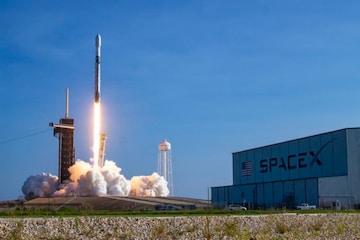

Known for his groundbreaking inventions in the field of space exploration, automobile and engineering, Elon Musk has taken up a new ambitious project. The billionaire tech mogul is now venturing into the field of satellite communication and wishes to ring the planet with over 40,000 satellites.
The project is developed by Musk’s SpaceX company under the name of Starlink and with this launch the number of satellites in the earth’s orbit will increase 13 times. According to SpaceX, the project will increase the internet speed to up to 100 megabytes per second which will allow users to stream multiple high definition movies simultaneously while still leaving some bandwidth to spare. “Starlink will deliver high speed broadband internet to locations where access has been unreliable, expensive, or completely unavailable,” says the website.
What makes this project even more ambitious is the use of Low-Earth Orbit (LEO) satellites which makes its operation even more precarious. Unlike conventional geostationary satellites which are over 35,000 kilometers from earth, the distance of starlink satellites from earth will be just 550 kilometers. Boasting of less mass and compact mass, every Starlink satellite weighs approximately 260 kilogram and has just one solar panel array.
A report by Bloomberg says that LEO satellites need to revolve around the earth at a speed of 5 miles per second to maintain a constant altitude. The receivers on the ground need to switch from one satellite signal to another constantly for a seamless internet connectivity, the report added.
The first Starlink satellite was launched in May 2019 and this month SpaceX launched 700 more satellites into orbit. In 2020, Starlink is targeting broadband services in the Northern United States and Canada. The company says it will expand its services to near global coverage by 2021. If the project succeeds, it threatens the business of many broadband service providers who use the traditional geostationary satellites.